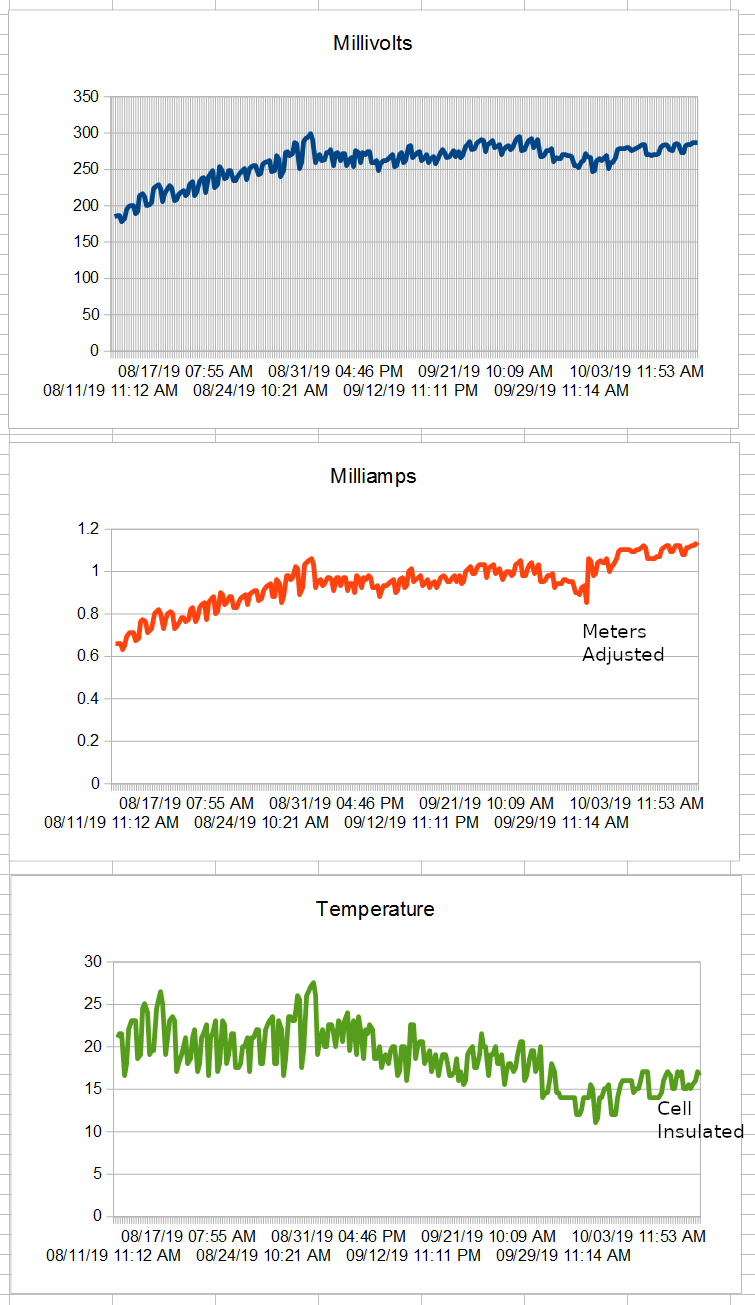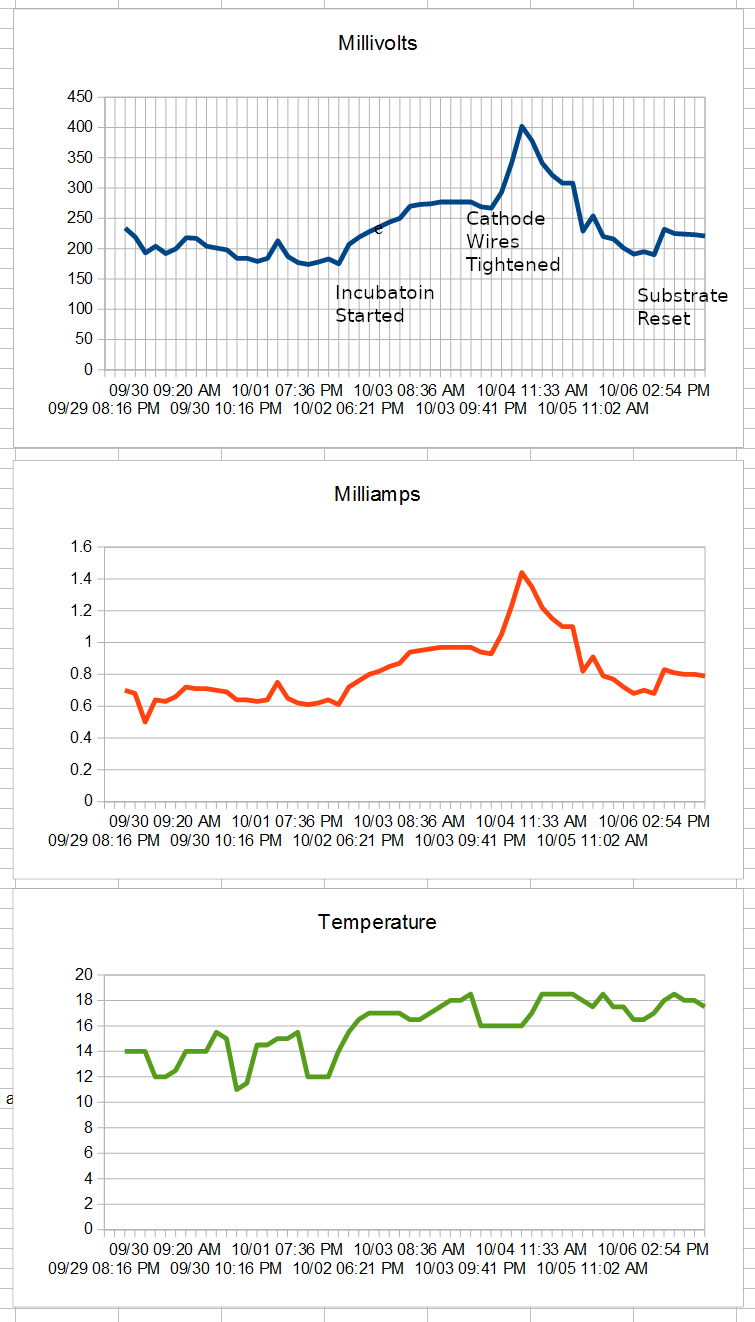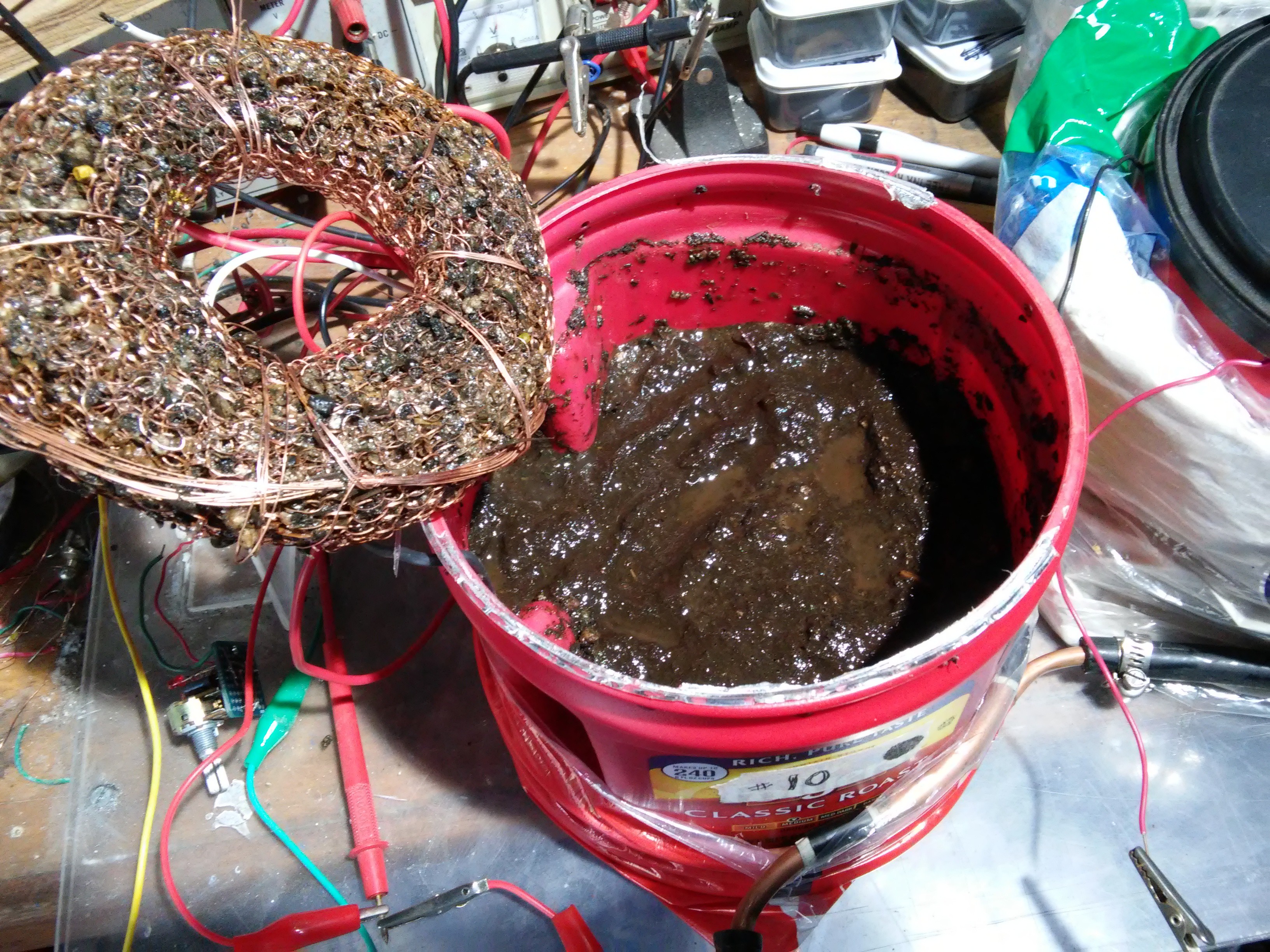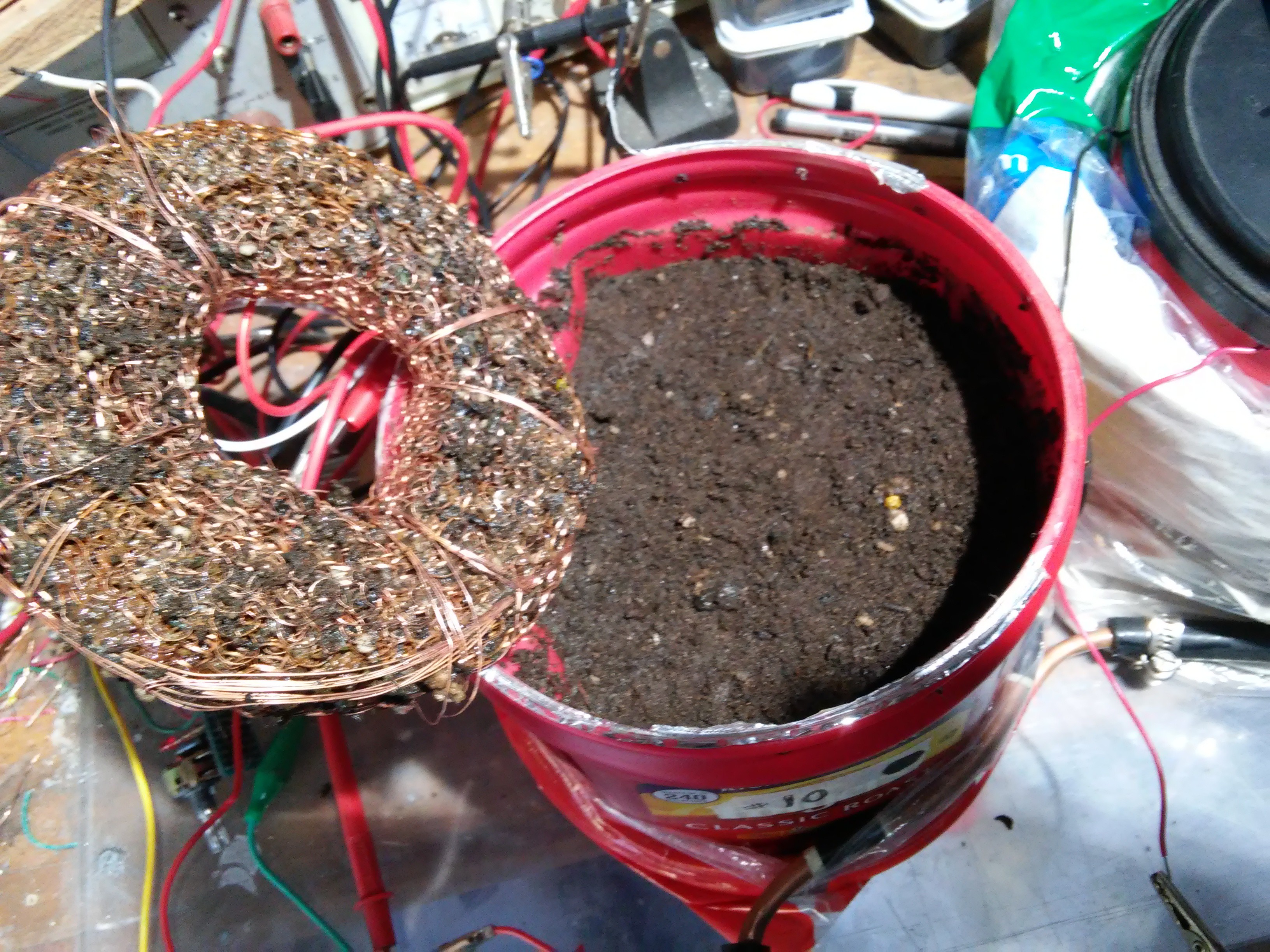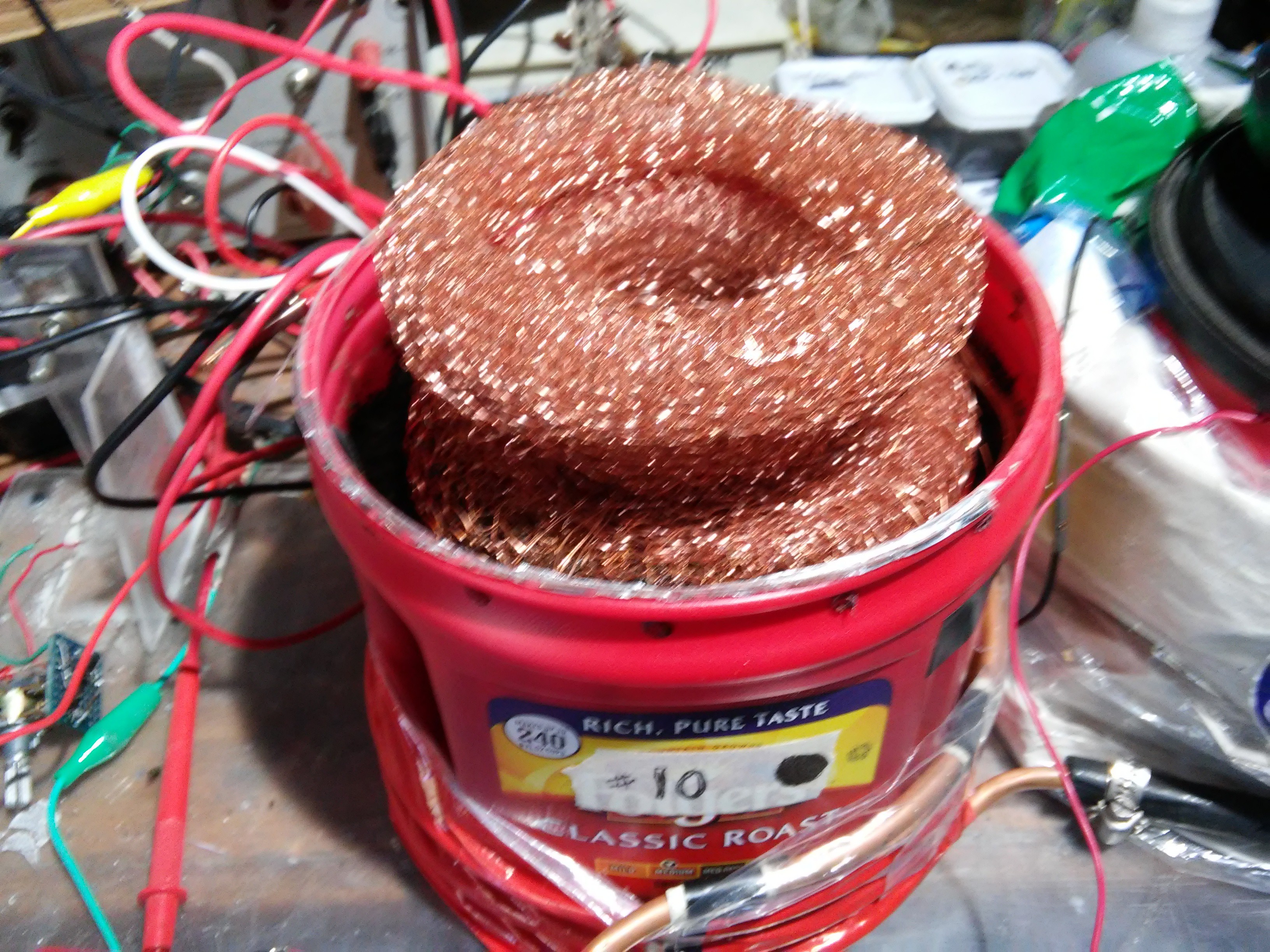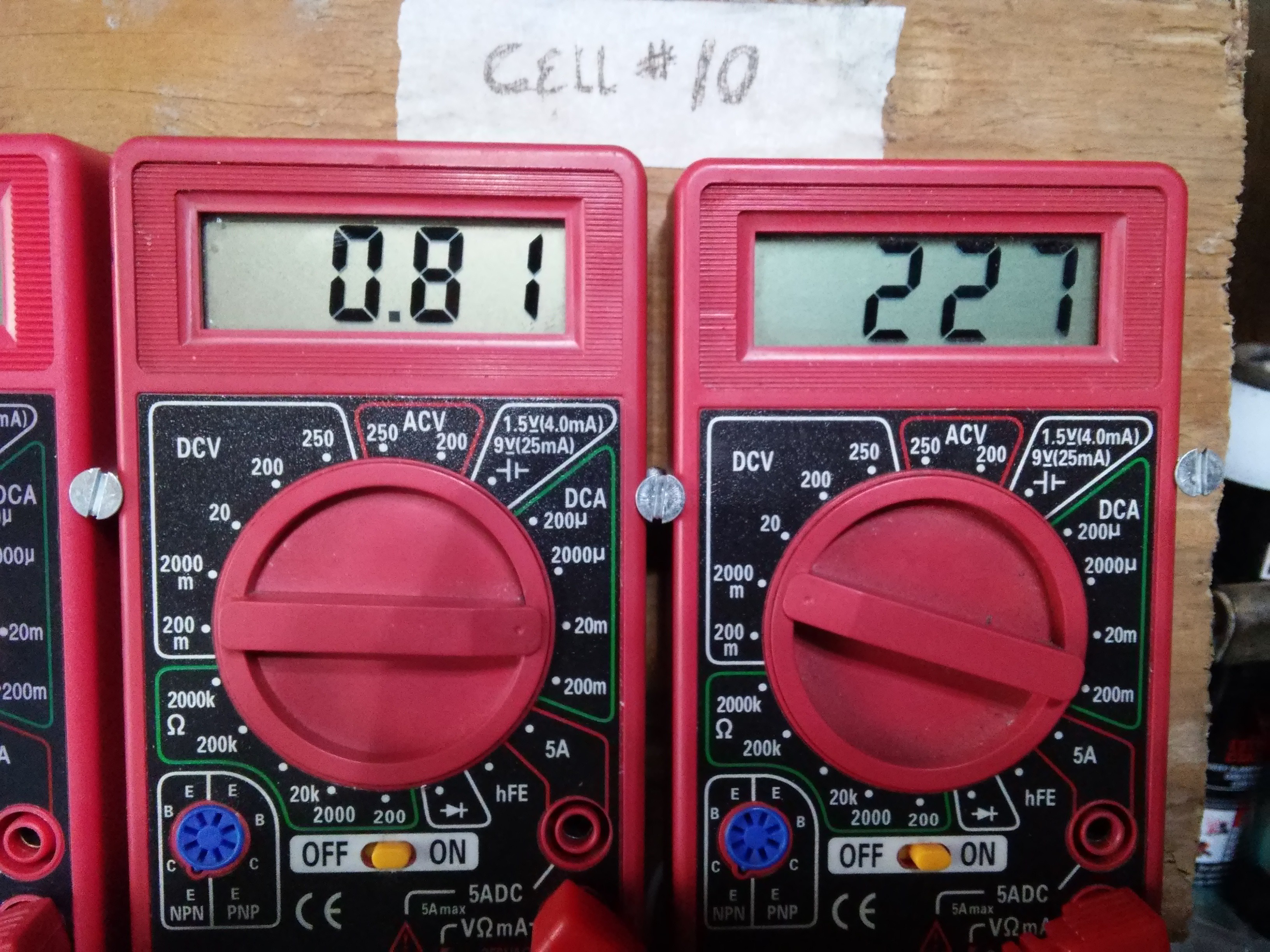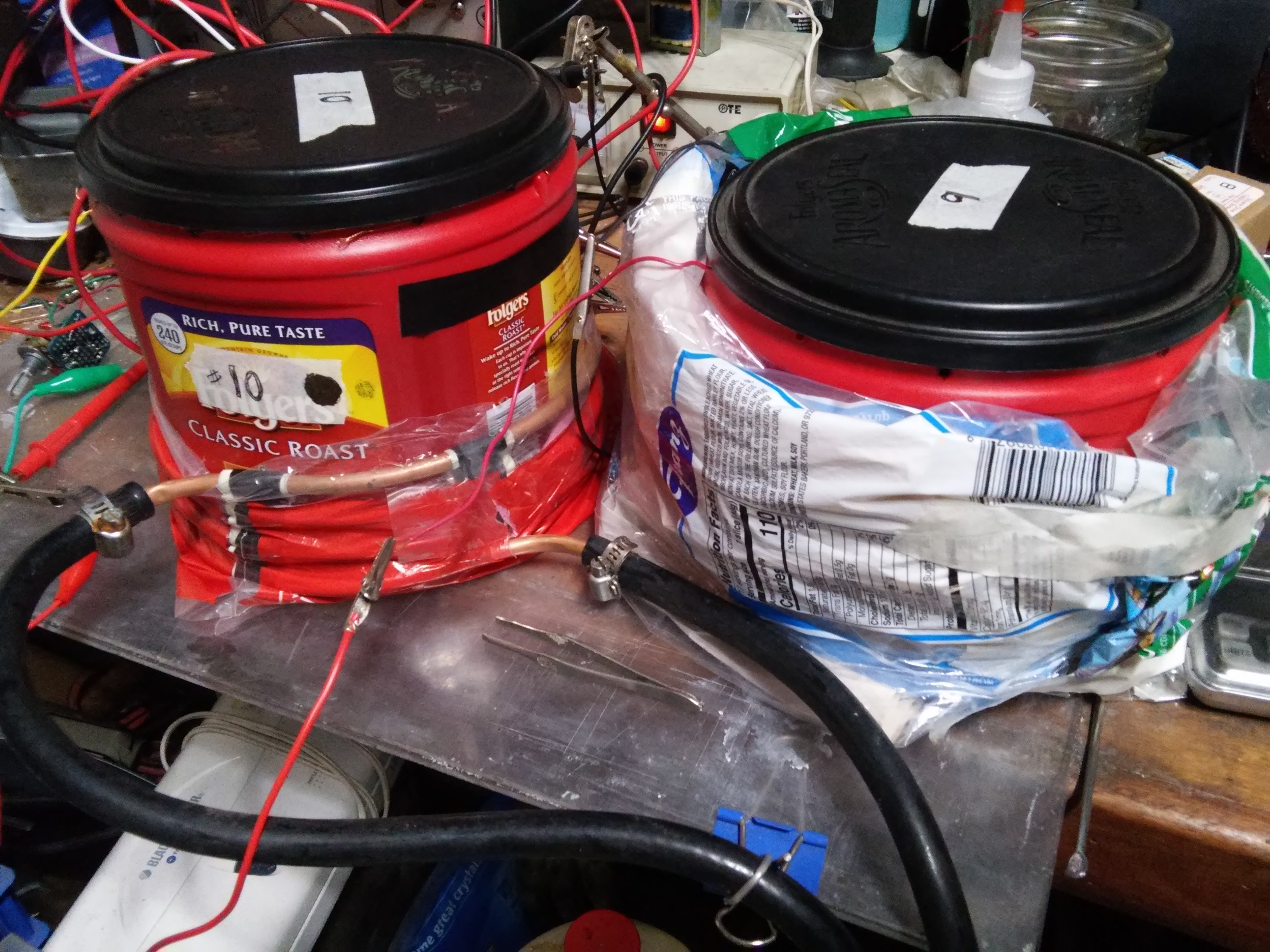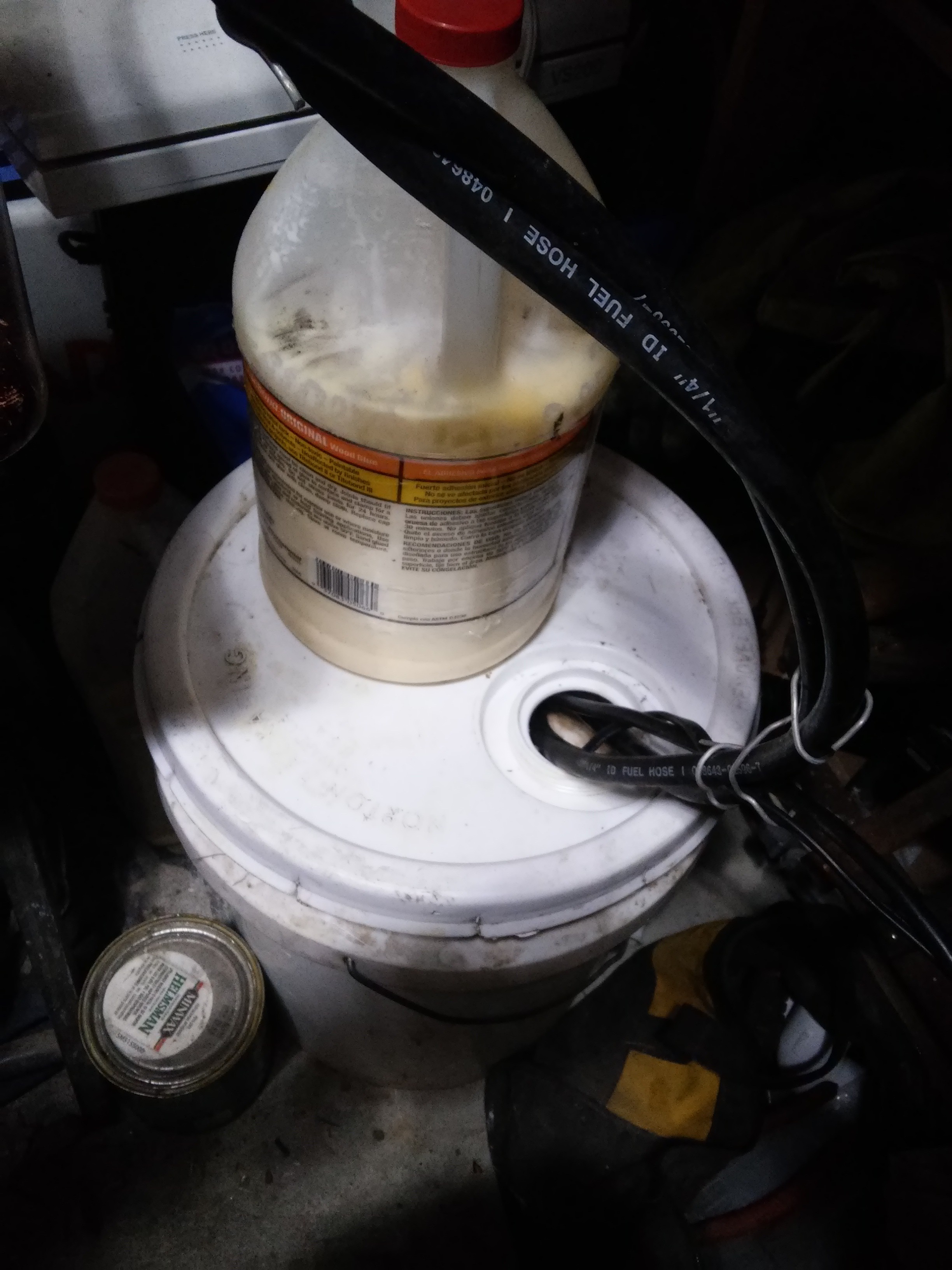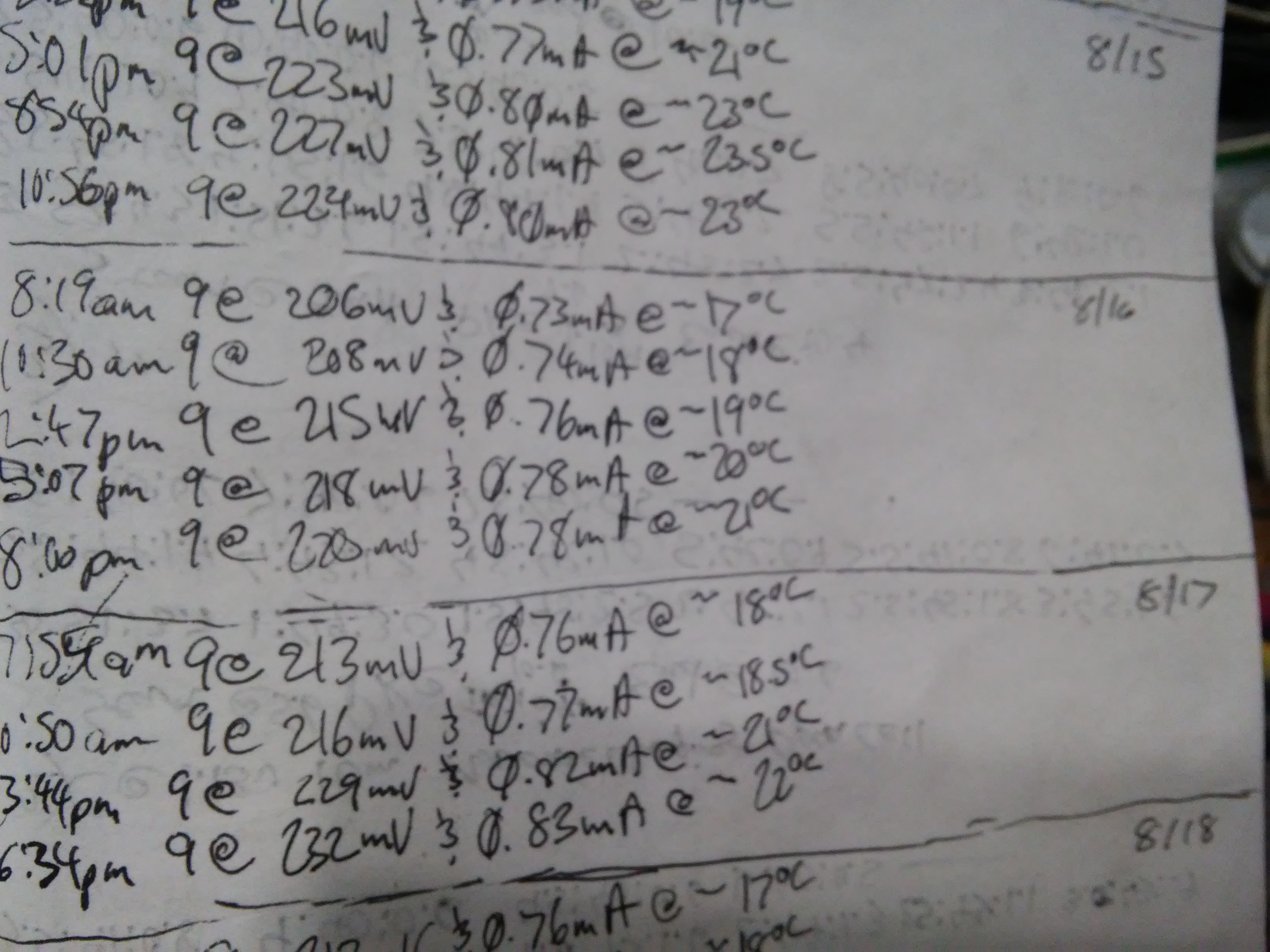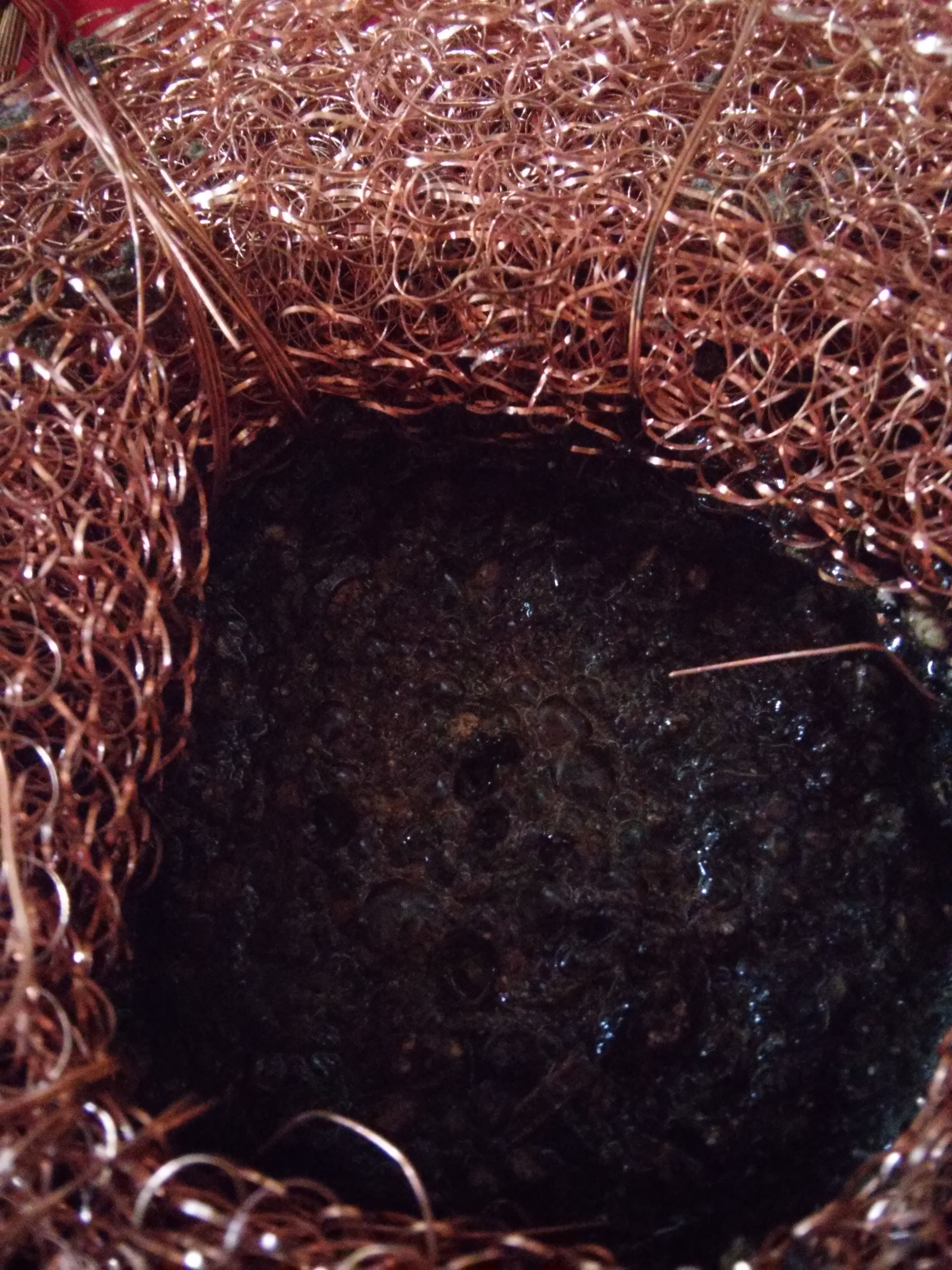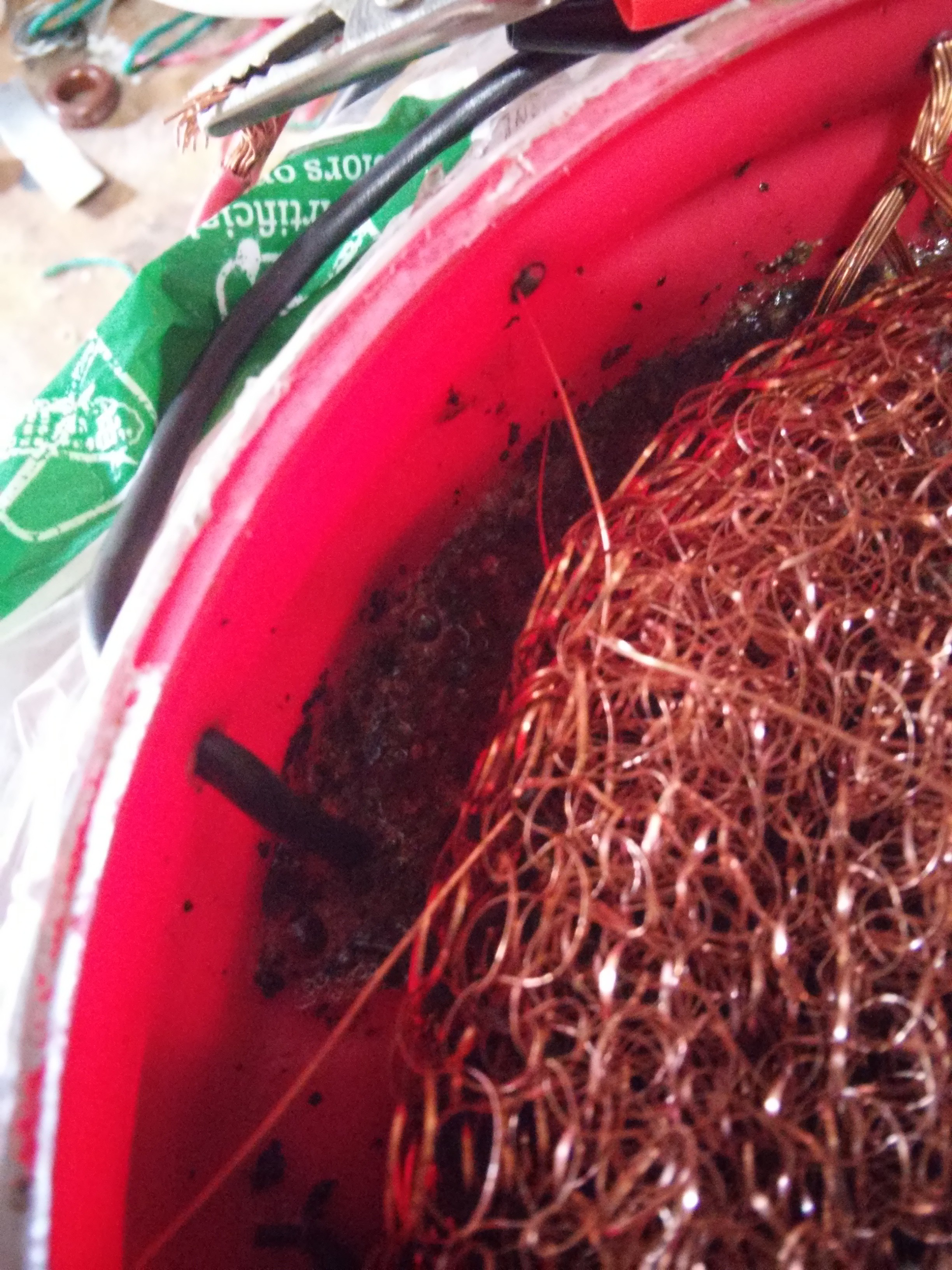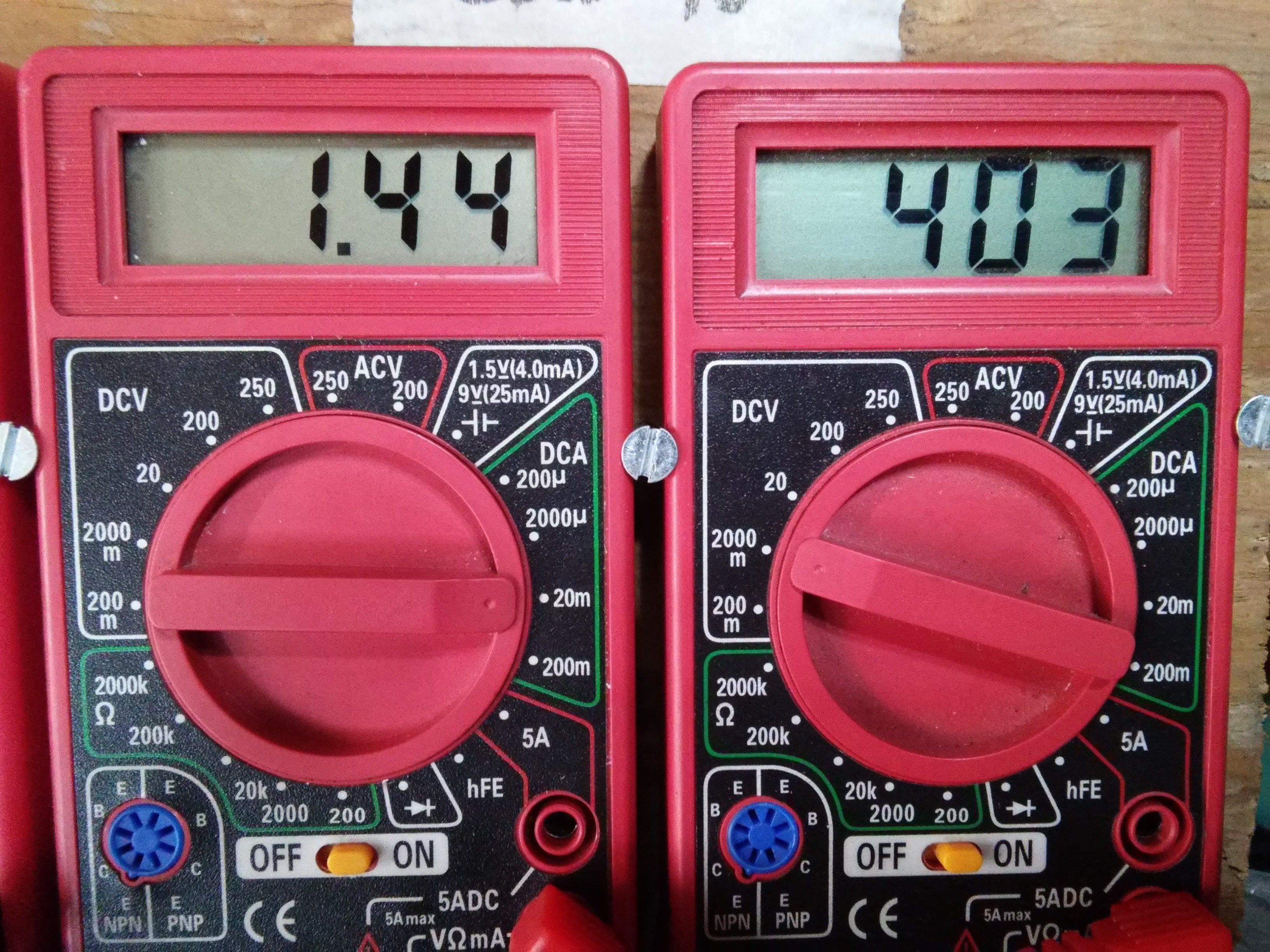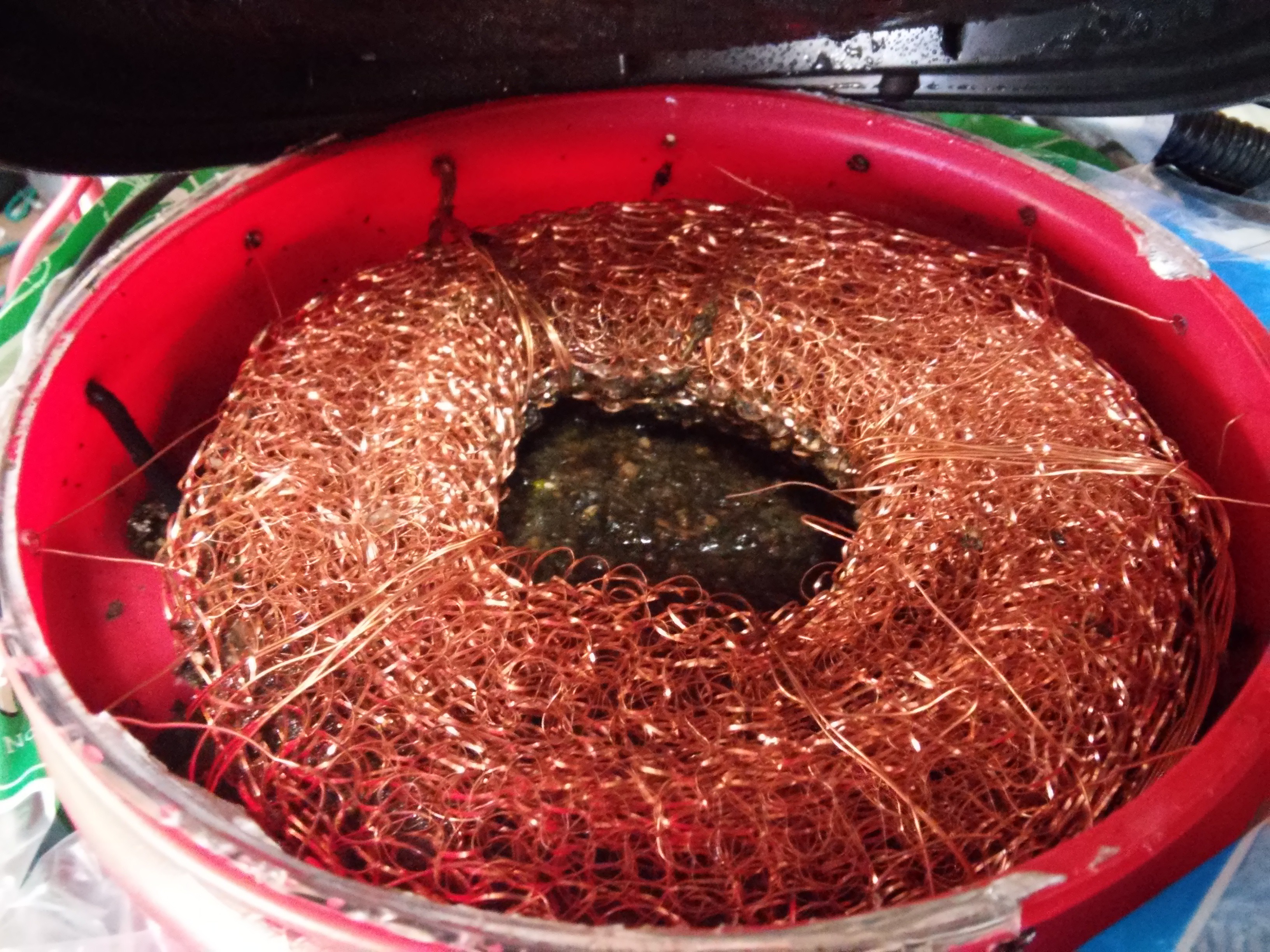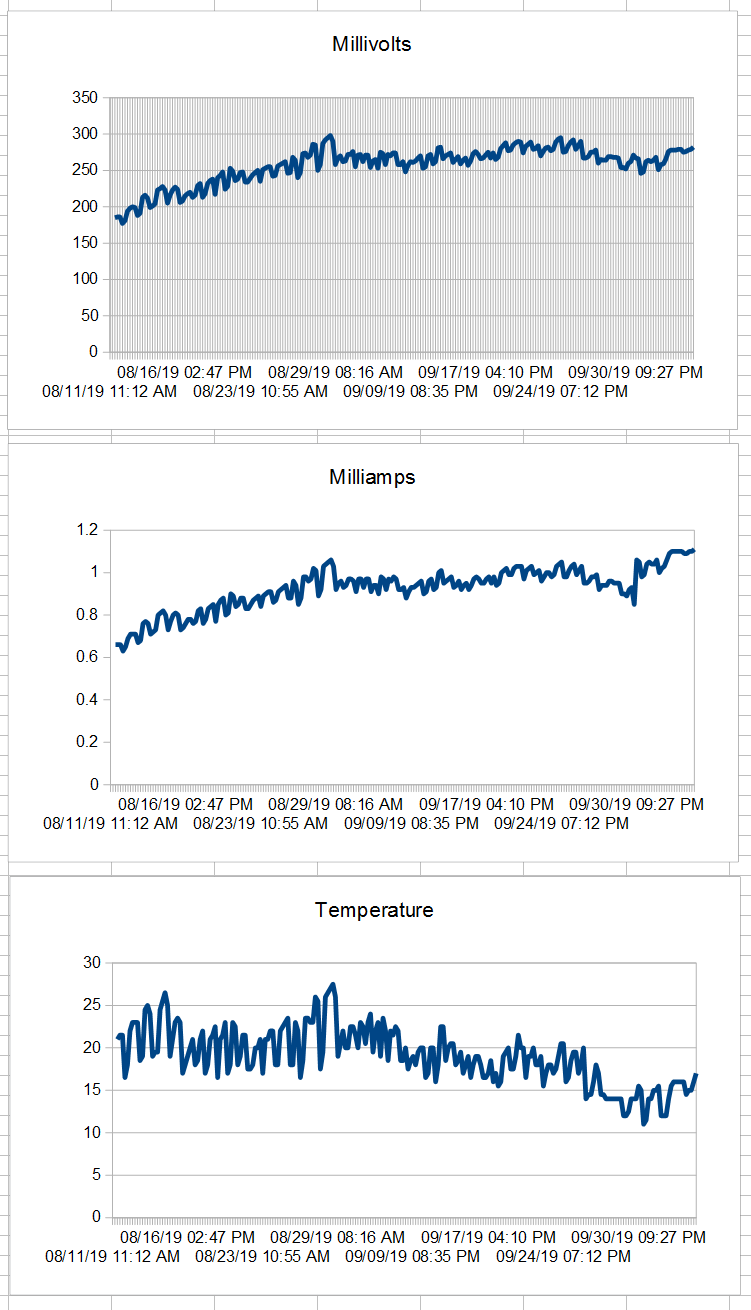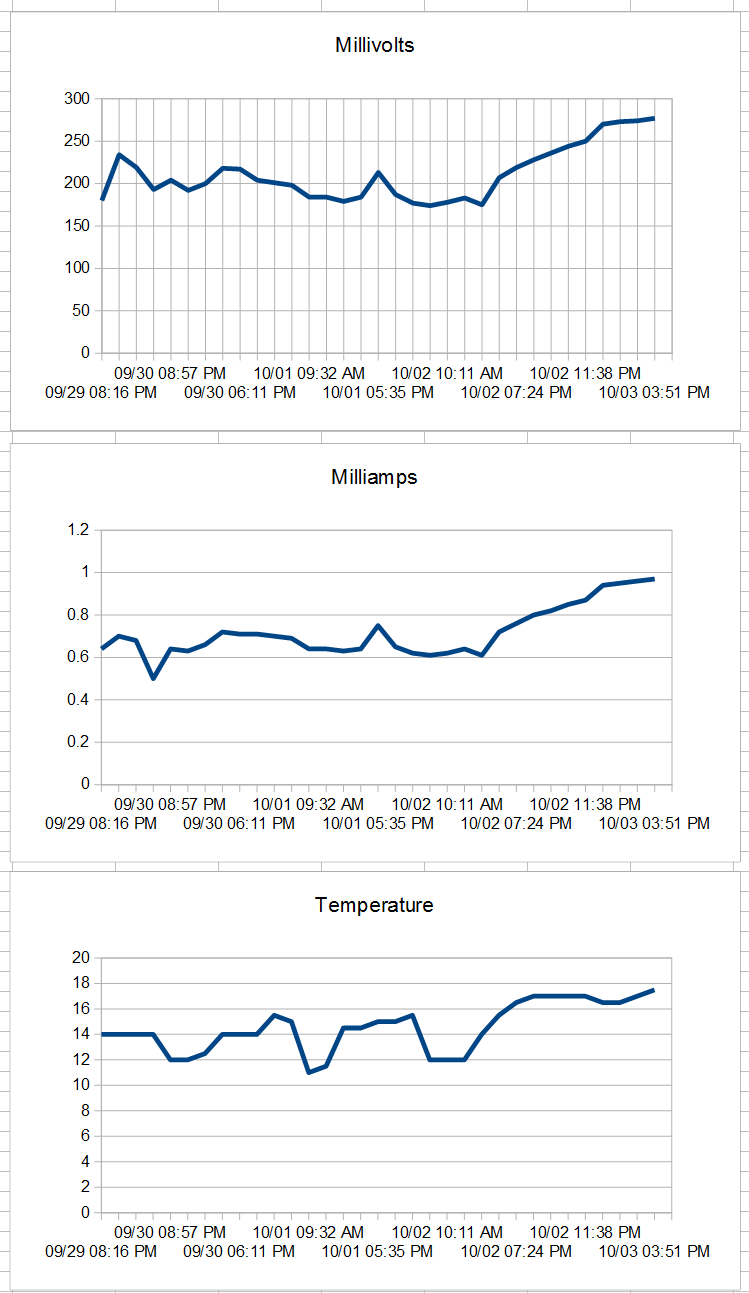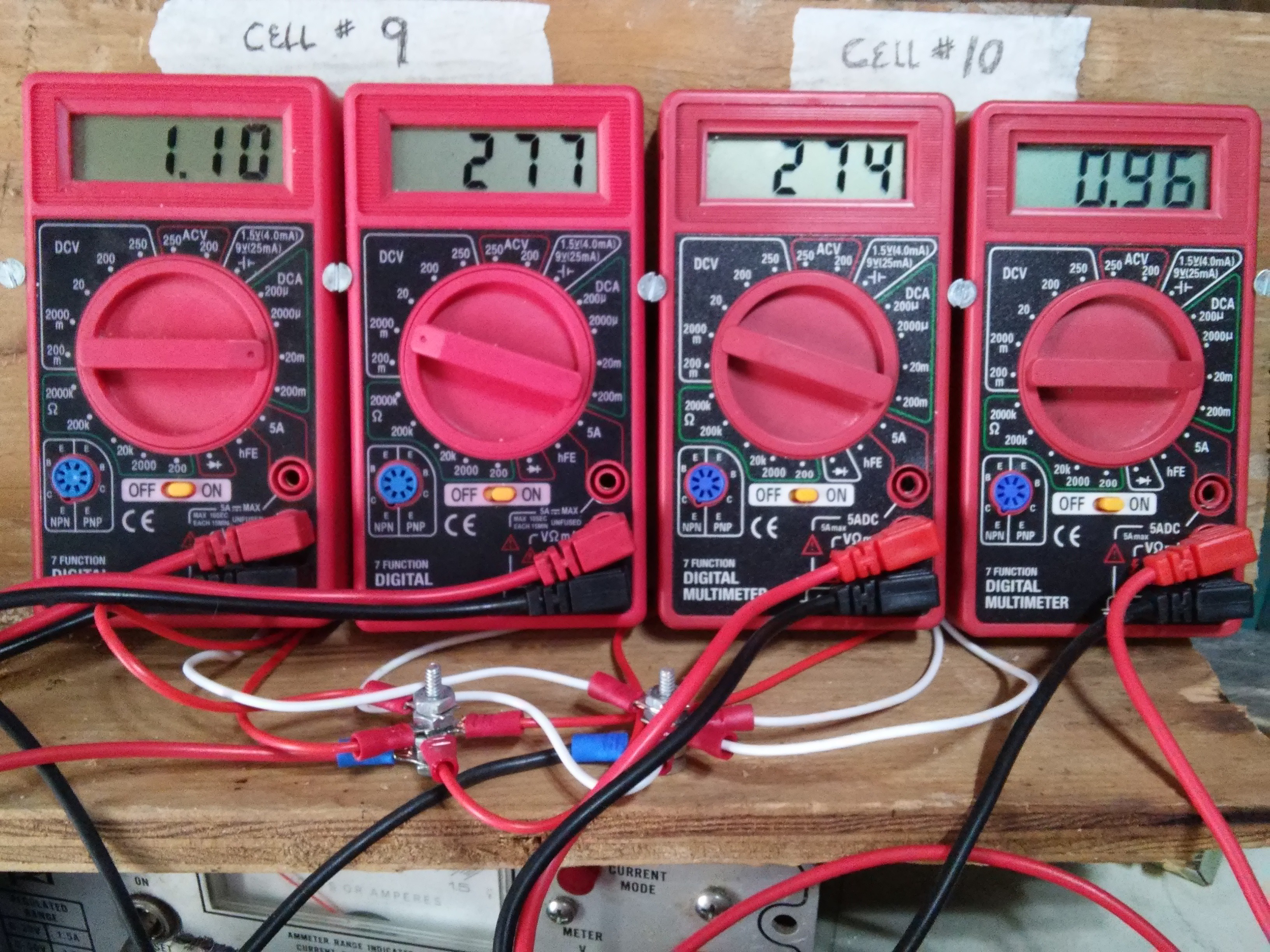-
A Good Morning for no.10 and New Charts
10/07/2019 at 17:39 • 0 commentsThis morning cell no.10 was sitting at a pleasant 217mv .77ma, no more violent swings. Hopefully it will now begin to exhibit a slow daily climb until it is producing at least as much as no.9. It's really hard to say though, ambient temps were near ideal for no.9 when it was constructed, so no.10 has an uphill battle to fight even with the warmer in place.
Here's cell no.9s latest data:
![]()
And Here's cell no.10s data:
![]()
-
Carnage!
10/06/2019 at 23:12 • 0 commentsI TORE ITS GUTS OUT! \m/
![]()
Yeah, I should have done this a while ago. Too much instability, that stuff was soup! This cells primary purpose was to help me determine if increasing the mass of the electrodes(specifically the anode) would generate significantly more power. So aside from more copper in the electrodes, everything now resembles no.9, no.9 was built half mud and half dry substrate, and no.9 is using extra copper rings on the cathode to keep it pressed against the substrate.
![]()
Top half dry now!
![]()
Some extra copper to keep the cathode in contact while the lid is closed.
I'm also thinking about punching a few holes around the cell just above the substrate line so heavy gasses can escape without choking out the cathode first.
It was reading 232mv .83ma when I closed the lid about 40min ago.
![]()
It is still stabilizing and sorting itself out but this is already improvement.
-
Good to have data.
10/06/2019 at 03:35 • 0 commentsSo after some more fussing and whatnot I think I've got the fermentation slowed enough that it's no longer causing problems. I swapped the insulation wrap over to cell no.9 so no.10 could cool off a bit, but it's still on the warm water circulator.
![]()
In this pic you can see the copper coil and hoses of the water circulator on no.10 and my makeshift "insulation wrap" on no.9... Everything I do is D.I.Y.
![]()
Here's the other half of the warm water circulator, 5gallon bucket, some fuel line hose, a pond pump and a fish tank heater.
Anyhow, so no.10 has somewhat stabilized in the low 200-210mv range. We're around discharge day 5 of this new cell. Meaning it's been discharging to a 270ohm resistor for about 5 days now. I looked at my notes:
![]()
Sorry for the terrible penmanship.. Cell no.9 was at discharge day 5 on about 8/16 so we can see that we are still tracking fairly well, especially since we've not been exceeding 18.5degC with cell no.10 in these lower ambient air temps.
-
More lessons in microbiology.
10/05/2019 at 17:30 • 0 commentsSignificant gas generation has become a problem in cell no.10, due to excessive water in the substrate the environment is favoring some kind of fermentative species. This is causing the surface of the substrate to change elevation and the gas(likely co2) is displacing the o2 that needs to reach the cathode.
![]()
![]()
That lovely burst of energy yesterday was quickly suffocated over night, as the substrate rose at least a quarter of an inch.
I gave the cell a good two or three hard taps on the table to get some of the bubbles out, the voltage had dropped to somewhere around 222mv, it's back in the 240s now but I'm considering removing some of the insulation so the fermentation slows or stalls. This cell isn't designed for a fermentation so it's causing all kinds of trouble.
-
Minor Optimizations, Major Rewards
10/04/2019 at 17:51 • 0 commentsI was having trouble believing that the new cell (no.10)wasn't out performing no.9, especially since it is on the heater. As I fidgeted with it, adding some more insulation and playing with the wires I noticed something. The output was steadily dropping the more the cell was jarred, the cathode was sinking! Well, actually the cathode was sinking but the substrate was also rising a bit due to microbe activity. So I tightened up the guy wires holding it in place and WOW!
![]()
10:32am Oct 4,2019 it peaked at about 405mv and is slowly coming down, we'll see where it lands.
![]()
Here you can see the cathode being held up so it is barely making contact with the substrate.
I think with the next cell I will mount the copper mesh completely above the substrate with a spike or brush that connects it electrically. This will maximize the O2 surface area and should allow the anode-cathode "substrate" distance to be tuned easier.
-
Historical Data
10/04/2019 at 01:09 • 0 commentsHere's some charted data I've gathered over the duration of this project:
Cell no.9:
![]()
and Fuel Cell no.10:
![]()
You'll notice a change on the 2nd when I hooked up the warm water circulator for no.10. No.9 also appears to be picking up some ambient heat due to proximity. Additionally I rearranged the meters and adjusted the wires on 9/30 and saw a huge improvement in performance from cell no.9 that is visible in the graphs.
-
First entry.
10/03/2019 at 18:43 • 0 commentsHere's a snapshot of my meter-board. I currently have 2 cells in operation, the instructions show the abridged setup of cell no. 10. For context, the cell output is somewhat influenced by daily temperature fluctuations, and cell no.10 is currently being warmed with a heated water circulator(20degC), as it is still new and I'm incubating the microbes for a few days since the ambient temps are much lower than when no.9 was constructed.
![]()
Cell no.9 was assembled on Aug. 6 of this year(2019). Cell no.10 on Sep. 29.
I will be sharing historical data in the next log update.
 williamolyolson
williamolyolson